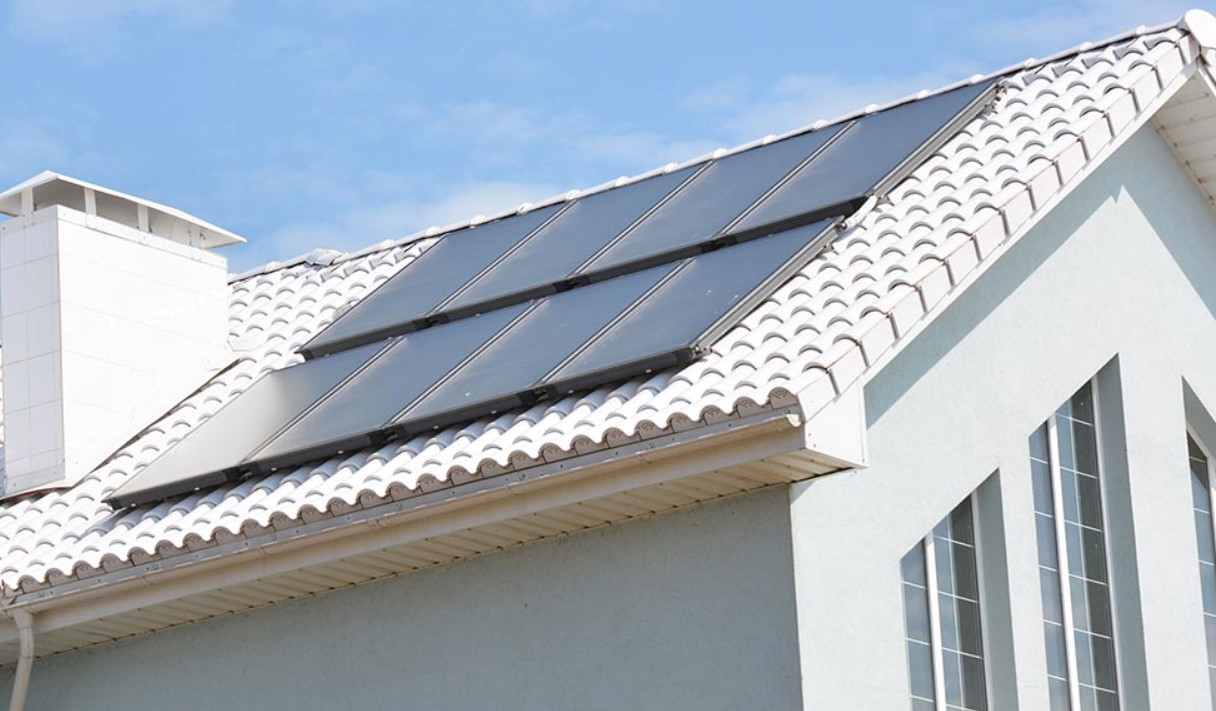5 Ways to Take Advantage of Passive Solar Energy in Your Home
June 8, 2024

Ways to Take Advantage of Passive Solar Energy in Your Home: We are committed to helping homeowners reduce their carbon footprint while saving money on their energy bills. One of the most effective ways to achieve this is by taking advantage of passive solar energy, which harnesses the power of the sun to heat and cool your home without the need for electricity. In this article, we will explore the top 5 ways to take advantage of passive solar energy in your home.
South-Facing Windows
The orientation of your home and its windows plays a critical role in passive solar design. South-facing windows are the most effective at capturing the sun’s heat during the winter months, as they receive the most sunlight throughout the day. To maximize their effectiveness, it’s essential to ensure that these windows are unobstructed and well-insulated, so that the heat doesn’t escape.
In addition, shading devices such as overhangs or awnings can be used to block direct sunlight during the summer months, preventing your home from overheating.
Thermal Mass
Thermal mass refers to the ability of a material to absorb and retain heat. Using materials with high thermal mass in your home can help regulate temperature by absorbing heat during the day and releasing it at night.
Concrete, brick, and tile are all excellent choices for materials with high thermal mass, and they can be used in floors, walls, and ceilings. However, it’s essential to ensure that these materials are properly insulated, so that the heat doesn’t escape.
Also Read: Signs That Your Solar Panels Need Repair or Replacement
Passive Solar Heating
Passive solar heating systems can be used to heat your home using the sun’s energy without the need for electricity. One common method is to use a sunspace or solar greenhouse, which is a small room attached to your home with large south-facing windows. The sunspace collects and stores heat during the day, which can then be distributed throughout your home using fans or natural convection.
Another option is to use a solar air heater, which is essentially a box with a black metal plate that absorbs sunlight and heats up the air inside, which is then blown into your home.
Passive Solar Cooling
Passive solar cooling can be achieved by using natural ventilation and shading to keep your home cool during the summer months. One effective method is to use a whole-house fan, which pulls in cool air from outside and expels hot air from your home. Another option is to use a solar chimney, which is essentially a tall, vertical shaft that allows hot air to escape from your home while drawing in cool air from outside.
Passive Solar Water Heating
Water heating is one of the largest energy expenses in most homes. Passive solar water heating systems can be used to heat water using the sun’s energy without the need for electricity. These systems typically consist of a solar collector, which absorbs sunlight and heats up a fluid (usually water or antifreeze), and a storage tank, which holds the hot water until it’s needed.
One common type of passive solar water heating system is a batch collector, which is essentially a large, insulated tank painted black and placed in a sunny location. The tank is filled with water, which is heated by the sun during the day and used as needed.
Conclusion
Passive solar energy is an excellent way to reduce your carbon footprint while saving money on your energy bills. By following these 5 tips, you can effectively harness the power of the sun to heat and cool your home, as well as provide hot water.
Remember, passive solar design is all about working with the natural environment, so it’s essential to consider factors such as orientation, insulation, and shading when implementing these strategies. With a little bit of planning and investment, you can transform your home
